If your computer light and fan stay on after shutdown, use the solutions provided in this article. Windows 11/10 computer take some time when you shut it down. After that, fans and lights turn off. But, according to the reports, the lights and fans continue to run and won’t turn off until users switch off the main power supply. Here, we have written some fixes that will help you resolve this issue.
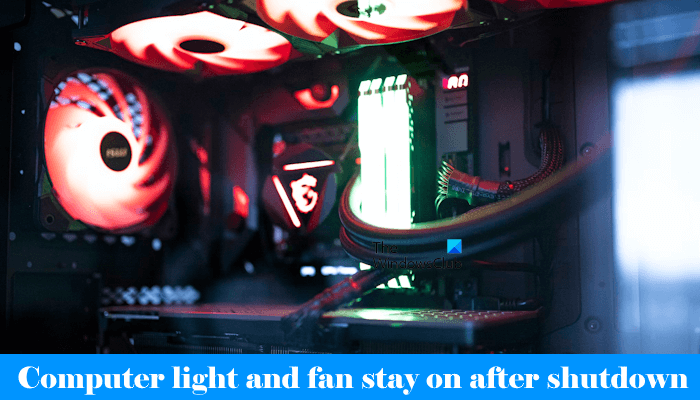
Why is the laptop light on after shutdown?
If the laptop light is on after shutdown, it means that the light is getting power from another source. However, software issues can sometimes also cause this problem. You need to investigate the cause of this problem to fix it.
Computer light and fan stay on after shutdown
Use the following suggestions if your Windows computer light and fan stay on after shutdown.
- Update your chipset driver
- Turn off Link State Power Management
- Disable Fast Startup
- Turn off Hibernation
- Restore power settings to default
- Did you enable the Wake-on-LAN?
- Reset your BIOS to default
- Your fans might be getting power from another source
Below, we have explained all these fixes in detail.
1] Update your chipset driver

We suggest you update your chipset driver, as an outdated chipset driver can also cause this problem. Visit the official website of your PC manufacturer and download the latest version of your chipset driver. Now, install the driver on your system.
2] Turn off Link State Power Management
Link Power State Management is one of the power options in the Control Panel. It is a part of PCI Express and works with Active State Power Management (ASPM). It controls the way your system consumes power while it is in plugged-in and unplugged states. This feature is useful, especially for laptop users. Hence, if you are a PC user, you can turn it off.
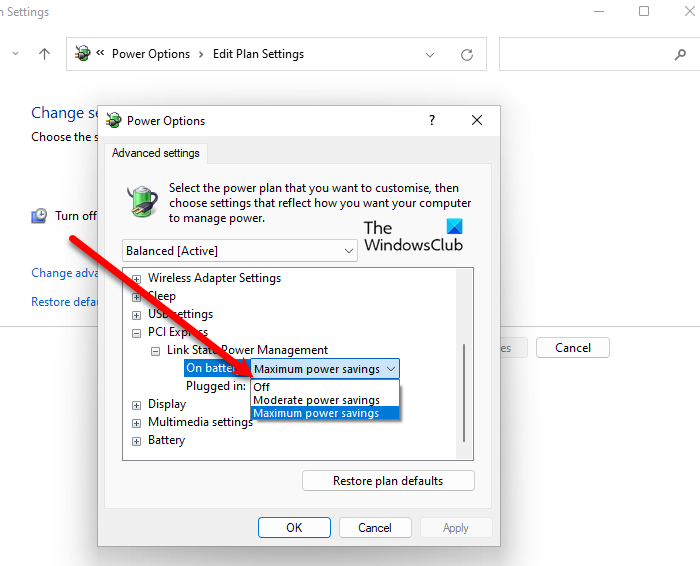
If your PC fans and lights remain on after shutdown, you can try disabling this setting. Disable Link State Power Management on your PC and see if it helps.
3] Disable Fast Startup
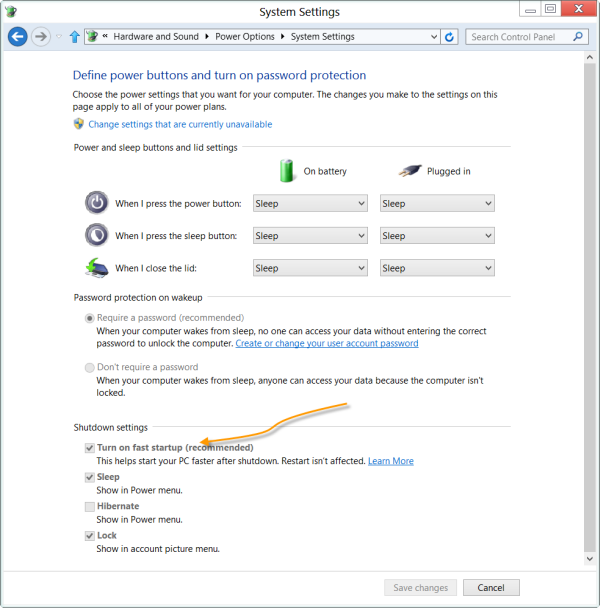
Fast Startup is a feature in Windows 11/10 computers that allows it to start quickly after shutdown. It is enabled by default in most of today’s computers. Fast Startup has been found causing issues with some users. Therefore, this might be the case with you. We suggest you disable Fast Startup and see if it works.
4] Turn off Hibernation

Hibernation is a state where your computer saves the current state in a file so the next time when you turn on your computer, you can continue from the previous state. If the Hibernation state is active on your system, we suggest you disable it. This can fix this issue. You have to use the administrator Command Prompt to turn off Hibernation.
5] Restore power settings to default
Incorrect power plan settings can also cause power-related issues on a Windows computer. If you have made multiple changes to your power plan settings, you might not remember all of them. Hence, reverting all these changes is not possible. In this case, we suggest you restore your power plan settings to default.
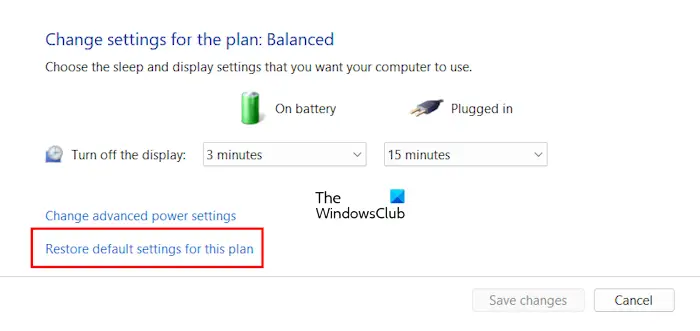
The following instructions will help you:
- Open the Control Panel.
- Type power in the Control Panel search bar and select Power Options from the search results.
- Click on the Change plan settings link next to your power plan.
- Now, click Restore default settings for this plan.
- Click Yes in the confirmation box.
If this does not work, change your power plan. You can also restore the missing default power plans on your system. If only the Balanced power plan is available on your system, this means that your system is in the Modern Standby Mode S0 state.
6] Did you enable the Wake-on-LAN?
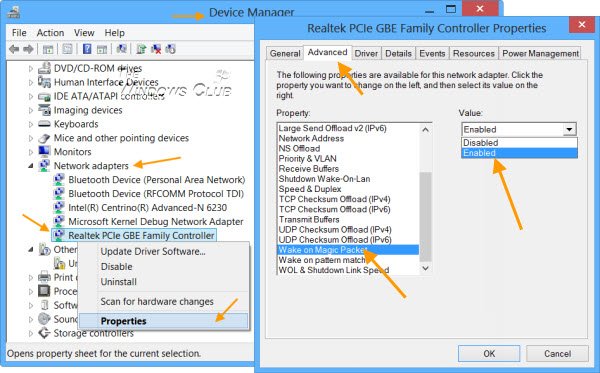
The Wake-on-LAN is a feature that allows you to remotely turn on your computer connected to the Local Area Network. Disable the Wake-on-LAN feature if it is enabled on your system.
7] Reset your BIOS to default
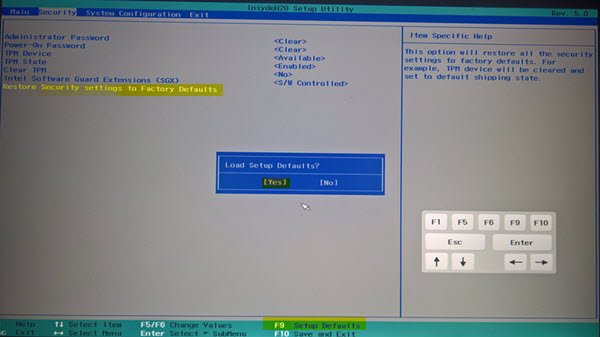
We also suggest you reset your BIOS to default. You can do this in two ways, by entering your BIOS and by removing and reseating the CMOS battery. Resetting BIOS to default by entering your system’s BIOS will be easy for you because, in the latter method, you have to open your laptop or computer case.
8] Your fans might be getting power from another source
It is also possible that your computer fans or lights are getting power from another source. For example, a KVM switch is used to control multiple computers with a keyboard, mouse, etc. The fans or lights might be getting power to stay on from another computer through the KVM switch. Disconnecting the peripherals from the KVM switch can fix this issue.
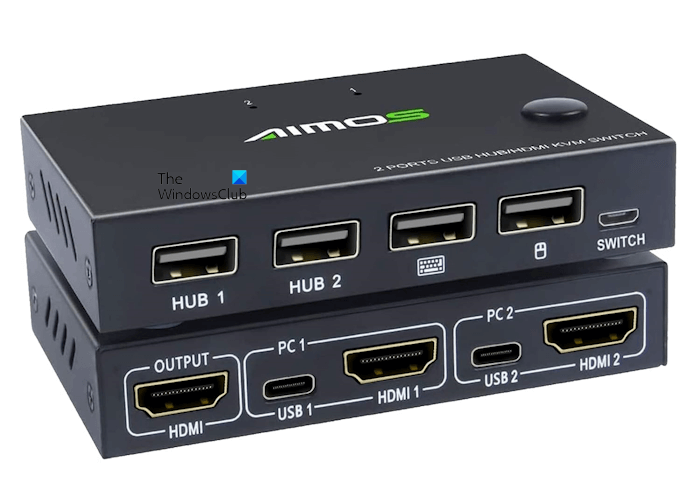
In the above example, we have shown that the computer fans and lights might get power from another source through the KVM switch. The source can be different in your case. Therefore, if you are not using the KVM switch, you need to troubleshoot the cause of the issue and find out the source providing power to your fans and lights.
That’s it. I hope this helps.
What to do if computer fan keeps running?
Computer fans keep running continuously when you work on the computer. Their function is to keep the CPU and GPU temperature under control. But if your computer fans keep running at full speed all the time, it can be a concerning issue. In this case, you have to investigate the cause, as accumulated dust, worn-out thermal paste, etc., can be the cause of this problem.
Read next: Fix Computer overheating and noisy laptop fan issues.